
RAMS Member Glen Murrie has been working on bringing to life a spectacular model of the DH-94 Moth Minor. Back in March this year he brought in to the club for everyone to have a look at when it was just bare wood and no electronics and even then it was an impressive build.
Glen has kindly provided an overview of his build and some statistics for us…
The plane
- It’s a 1/6 scale model of a DH-94 Moth Minor
- Wingspan is 1850mm length around 1300mm long
- Weight is 2.5kg
- Constructed using composite and balsa.
- Engine cowl and cockpit lift out were made by building the shapes using foam and then fibre glassing finishing off by removing all the foam. The undercarriage fairings were done the same way.
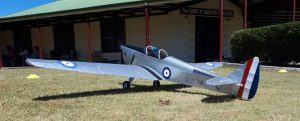 2.7mm ply was used for the forward bulkheads, battery and servo tray, and sides along the wing mountings. The after section uses a combination of Balsa formers, Tassy Oak stringers with Balsa planking. The tail assembly was all balsa formers. The wings are supported using a carbon tube. Construction is Tassy Oak stringers and balsa formers. The front of the wing is balsa sheets with the back covered in heat shrink.
2.7mm ply was used for the forward bulkheads, battery and servo tray, and sides along the wing mountings. The after section uses a combination of Balsa formers, Tassy Oak stringers with Balsa planking. The tail assembly was all balsa formers. The wings are supported using a carbon tube. Construction is Tassy Oak stringers and balsa formers. The front of the wing is balsa sheets with the back covered in heat shrink.- Finish is water based paint and plastic heat shrink.
- Motor is a Flash Hobby D3548 1100kv 3s -5s motor developing 911Watts from Banggood
- Power pack is a 3000 4s 40c battery with a Plush 60Amp ESC and restricting my amperage to 50Amps at 85% revs (750 Watts). I work on 300Watts per Kg.
- Propeller is a 12 x 8 Masters to scale.
Flying the model
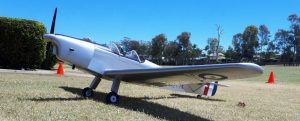 In essence… still learning!
In essence… still learning!
On its maiden flight I realised the CG was way out. It was a handful to fly and had a strong desire to want to turn on me. I landed hard breaking off off one wheel strut.
With further testing I found one wing was slightly heavier than the other so I balanced the model along its centreline with a little lead under one servo mount. I also moved the battery and ESC further aft after turning the plane upside down to give me a better balance. A good idea when dealing with planes with low wings and high motors I found.
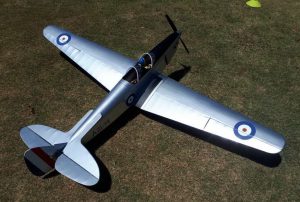 Second flight was better. I slowed too much on the approach and stalled taking out the wheel strut again and damaging the wing mounting. I have added reinforcement in the wing mountings and drilled holes into the bend in the landing struts to encourage them to bend on heavy landings. I also found a sticky servo on the rudder. I removed some plastic from the control arm as it was fouling the servo body on tightening the screw.
Second flight was better. I slowed too much on the approach and stalled taking out the wheel strut again and damaging the wing mounting. I have added reinforcement in the wing mountings and drilled holes into the bend in the landing struts to encourage them to bend on heavy landings. I also found a sticky servo on the rudder. I removed some plastic from the control arm as it was fouling the servo body on tightening the screw.
Still to make the third flight.
About the (real) Plane
- The DH-94 Moth Minor was developed and designed by De Havilland and first flown in UK on 22 June 1937
- 140 planes were built
- Top speed 191 Km/hr powered by a 90HP Gipsy Minor engine
The aircraft had a conventional plywood and spruce fuselage, but the high aspect ratio wing was skinned with plywood, like the earlier Comet Racer and Albatross. The wings could be folded from a point outside each undercarriage leg to minimise hangar space requirements.
History of the DH-94 Moth Minor
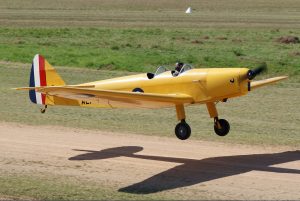 When Britain declared with Germany in September 1939, De Havilland Aircraft Co was producing Moth Minors at a rate of 8 aircraft a week in the “94 Shop” at their Hatfield plant, and 100 had been completed or construction begun. Despite a full order book from British flying clubs and private owners, the company closed the DH-94 production line to make way for priority military orders. Private flying in Great Britain was to stop because of wartime regulations and petrol rationing, so future deliveries were doubtful and the RAF had no interest in the type.
When Britain declared with Germany in September 1939, De Havilland Aircraft Co was producing Moth Minors at a rate of 8 aircraft a week in the “94 Shop” at their Hatfield plant, and 100 had been completed or construction begun. Despite a full order book from British flying clubs and private owners, the company closed the DH-94 production line to make way for priority military orders. Private flying in Great Britain was to stop because of wartime regulations and petrol rationing, so future deliveries were doubtful and the RAF had no interest in the type.
The DH-94 Moth Minor in Australia
The RAAF order would be produced by DHA in Sydney using the DH-94 manufacturing plant, jigs, tools and drawings, which were packed up and shipped to Australia. Also shipped were all remaining stocks of completed and uncompleted airframe assemblies and DH Gipsy Minor engines.
40 aircraft were built under license at Bankstown as they were urgently required for training as a replacement for the Tiger Moth. I know of an example in WA in a museum one is still flying in Victoria and another has recently been rebuilt in Queensland and is believed to be operating in Northern NSW.
Its also interesting to note that Canada had a similar requirement during the war years for training aircraft and ended up building and using the later up date aluminium design from de Havilland version known as the de Havilland Chipmunk.
Thank you Glen for sharing this journey with us. The plane is amazing and exquisitely built.
[Best_Wordpress_Gallery id=”15″ gal_title=”Glen Murrie Warbird”]
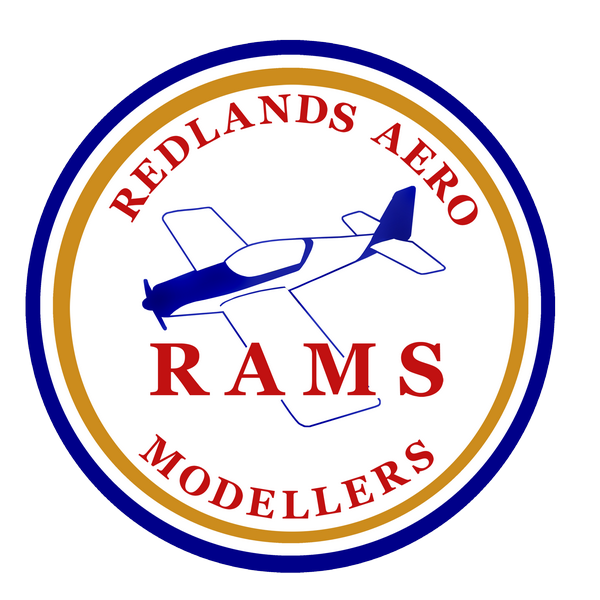
Congratulations, Great build! I am building exactly the same model. Still drawing and building. Will use an asp fs 0.61 which fit nicely in the cowl. Hope to actieve 2.5 kg as well. As soon as i have finished it I will make a thread with pictures…. What a coïncidence, because this Dh-94 is not a plane which is build or seen often, especially this color scheme and serial number. I love de Haviland, all great designs! Greetings from the Netherlands.
Hi Maurice
Thanks for the comments. I chose the colour scheme from the RAAF (Australian Airforce) The serial was from one of the 40 planes built in Aus. I understand this plane was rebuilt but painted yellow. See the last pic.
All the best for your build